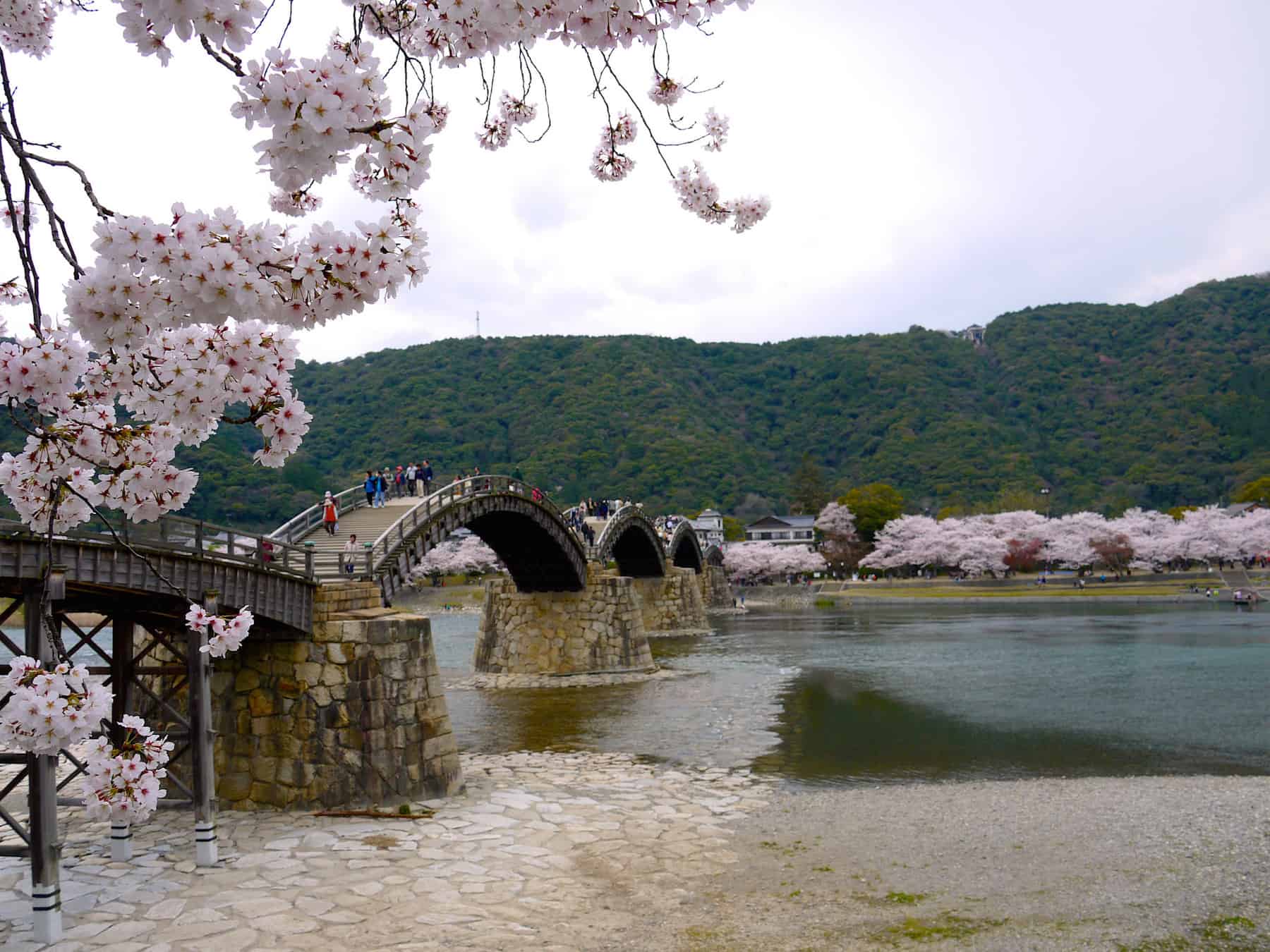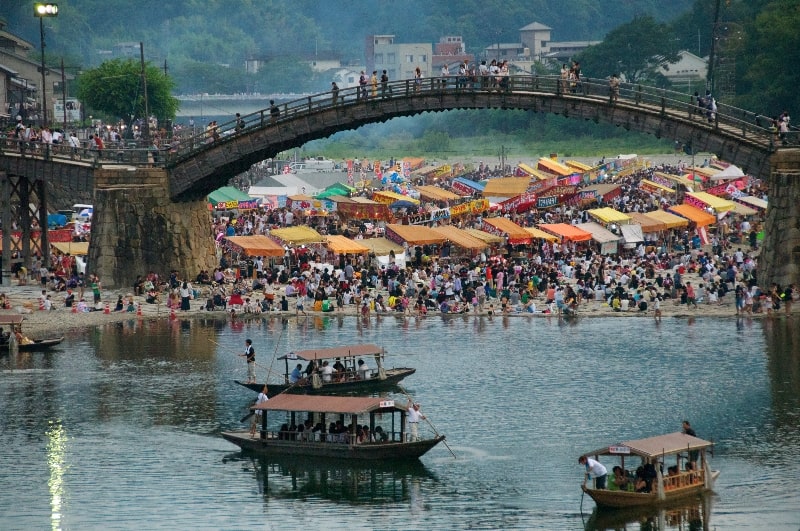Kintaikyo Bridge
The iconic Kintaikyo Bridge in the nearby city of Iwakuni with its unique five-span arch design is picture postcard beautiful. Its location is also very pretty, with nice parks nearby containing other (more minor) attractions- it makes for an easy and worthwhile day trip from Hiroshima.
The bridge was originally built in 1673 to connect the hilltop castle stronghold of the Kikkawa clan that ruled the Iwakuni domain with the growing town that lay on the other side of the Nishiki River. Though the design was intended to defend the crossing against the periodic floods that afflicted previous bridges, it did not prove to be immune to the ravages of nature. The original stood for only a year or so before it too was swept away, and the bridge you see today is its fourth incarnation. That said, thanks to innovative building technologies passed down the generations of local carpenters, and a program of systematic rebuilding, the bridges have weathered many a typhoon, flood and earthquake without sustaining critical damage. Amazingly, until the most recent reconstruction (in the early 1990s), not a single nail was used in the bridge’s construction. For the first 195 years of its history, until the dismantling of the feudal system after the Meiji Restoration of 1868, only the feudal lords and their vassals were permitted to use the bridge.
Today, Kintaikyo Bridge is Iwakuni’s biggest tourist attraction, and, for a small fee, anyone can now follow in the footsteps of the feudal lords and samurai. It’s well worth the money, but the steps are steep and you need to be careful of your footing.
Several seasonal festivals are held in this picturesque location. It is a beautiful spot for hanami cherry blossom viewing in early spring. April 29 each year marks the date of the Kintaikyo Bridge Festival designed to demonstrate residents’ gratitude to their ancestors who built the bridge, at which there are parades over the bridge in period costumes, as well as displays of matchlock marksmanship by local gunners also dressed in period garb. Every first Saturday in August, the impressive Nishiki River Water Fireworks Festival is held and June through August, there are demonstrations of the traditional art of cormorant fishing which dates from the Edo Period.
Also to be found in this area is a reconstruction of the mountain top Iwakuni Castle, old samurai quarters, Kikko-koen Park, and a museum dedicated to Iwakuni’s white snakes which have been designated as special national treasures by the Japanese government.
Access:
By train
Iwakuni is approximately 45 minutes from Hiroshima by local train on the Sanyo Line. From JR Iwakuni Station it is a 20 minute bus ride to Kintaikyō Bridge (¥240).
By bus
Buses run between Hiroshima Bus Center and Kintai-kyo Bridge (continuing on to Iwakuni JR Station) about once an hour (¥930 one way). Buses leave from stand #1 and the journey takes about an hour. You get some nice views of Miyajima island an the coastline on the way.
View Kintaikyo Bridge in a larger map
Read this article in German courtesy of Japan Digest.




